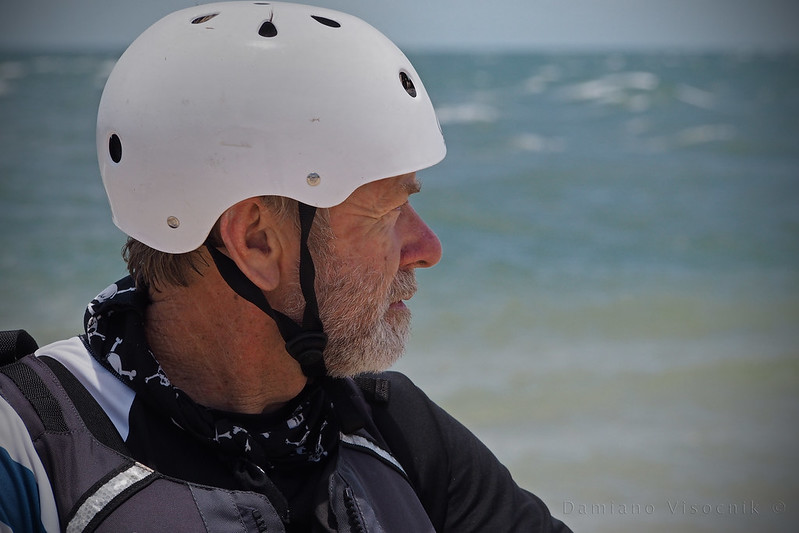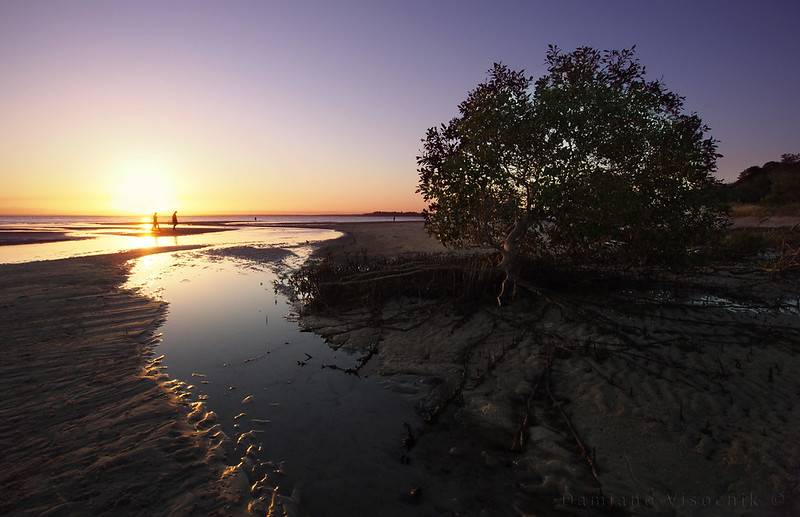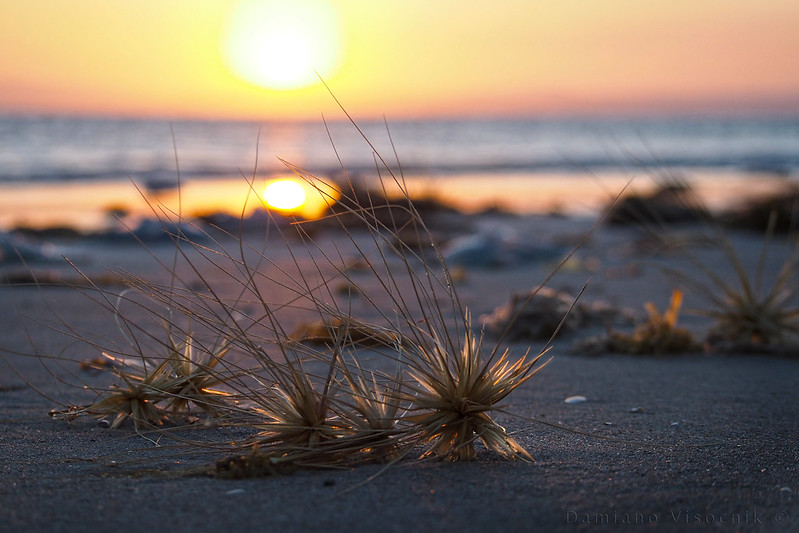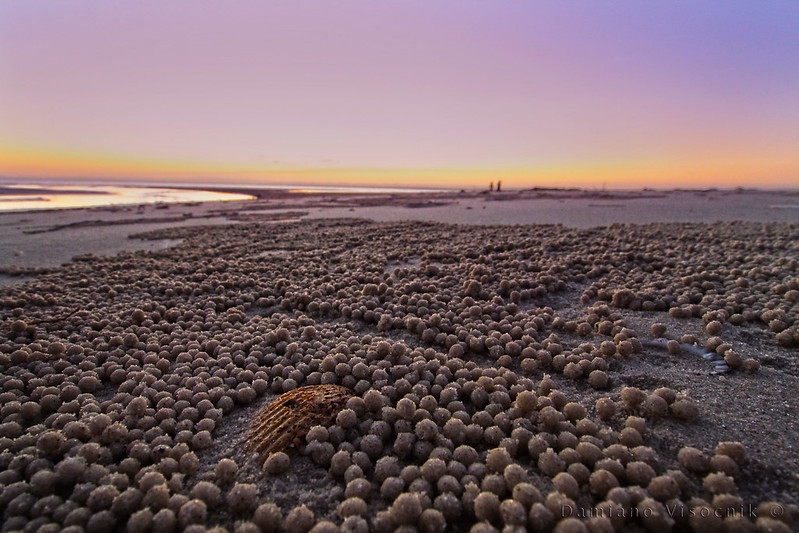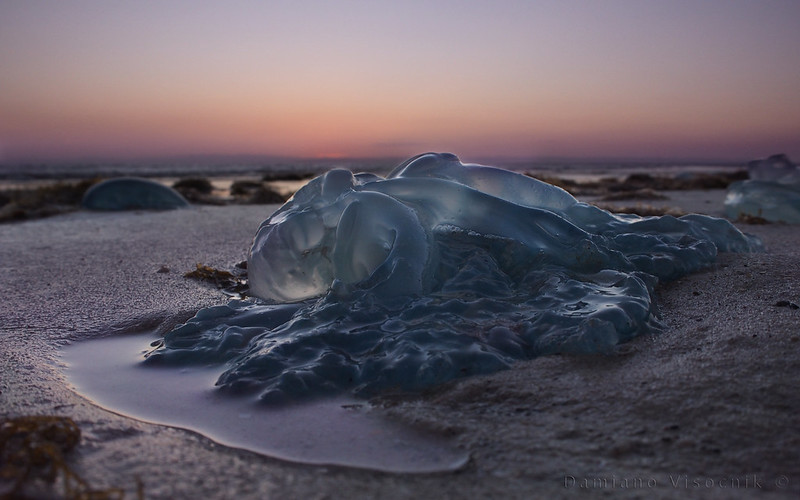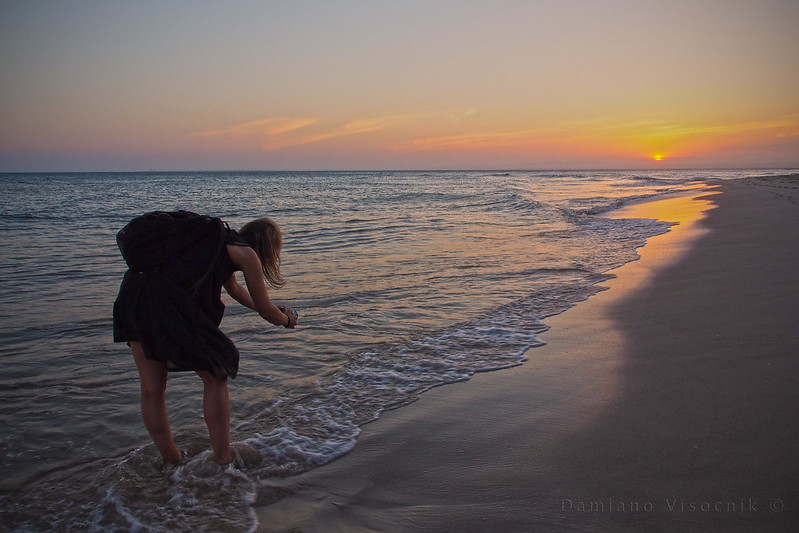.
"Keep on pumping, don't stop, you are doing fine!"
Those were the words of encouragement that I was saying to Tim
* hoping he could hear me; he was clearly shaken by the experience.
It was windy and the waves were large enough that he no longer could brace efficiently and eventually he fell in. I was holding his flooded kayak stabilizing him while he was furiously trying to empty it with the hand-held pump. It was working, but just so slowly...
The fear I saw early in Tim's eyes was now slowly subsiding, he knew that he will be alright.
I was on a Sunday outing with a group of kayakers, where the paddling arrangements were loose: we paddle together but without real rules and expectations.
I identified myself with Tim and recalled a few years back when I first joined a kayak club and had my first rescue.
I joined a club to learn the skills necessary to paddle safely in the ocean. I also enjoyed the company of other like-minded paddlers that genuinely loved the sport.
But I am kind of bitter about clubs now; my experience with them leads me to believe that, while they are good in principle, they also attract a fair share of power struggles.
My first exposure to a club was while bushwalking (backpacking).
I was new at the game, very keen but I knew little.
I joined the local club and went on walks and camps with my new-found buddies.
It was fun and I learned a lot. But the longer I was in the club the more I became exposed to the politics that seem inevitable in a structured environment: I observed a good number of people getting very animated about basic issues and some individuals clearly had their heart in the wrong place.
Eventually I no longer wanted to go on their outings as the red tape became too oppressive.
The club was large with several hundred members.
Years later I started sea kayaking.
I knew very little about the sea and I figured that I should really learn how to stay safe out on the water. I was lucky to get involved with a newly formed paddling club that was government sanctioned. For the first year it was really awesome: we all chipped-in with the organizing and there was a real good energy there.
Protocol was simple with not too many rules. Paddling was fun and we really went to great places; the calendar was full of activities.
QSKC trip to Lady Musgrave Island
As the Club grew it attracted individuals that wanted to make a profit from other paddlers while I was not sure if they really loved the sport without the monetary incentive; I call it conflict of interest.
The basic rules were not good enough anymore and a strong push to have mandatory skills to participate on any Club paddles was pushed onto the members. Incidentally those skills could only be "achieved" by being instructed by the few certified commercial operators.
And then it finally dawned on me: this was no longer a bona-fide club, this was becoming a money motivated gig for a few eager individuals.
I was kicked out of the Club for wanting to
expose a sexual harassment case and I was bitter about the events. I was also worried that my skills would not advance and I would loose my paddling buddies. I did loose some buddies that, if I look at them now, were rather lame.
Some no longer paddle and some just struggle in the same constrictive environment.
Luckily the Club is not the only way to paddle with others.
Several informal groups are actively involved in sea kayaking where I live.
easy paddle with the Claytons
There are also other Clubs that unfortunately, because of external pressure, seem to be too structured for a real free paddling experience.
I started to paddle more and more frequently with the very same people that shunned the Club that I joined in the first place.
As a novice I used to look at them as a dangerous crowd to paddle with. It seems that the Club culture brain-washed me enough to instill a fear in me to not paddle if not in a totally controlled and anal environment. Initially I felt that we should paddle all together, keeping a constant eye on each other.
Nobody should be no further than a few paddle strokes and if "anything happens" one could be "saved" within seconds. The tall stories of sharks (something that the Club was very good at selling) however had little impact on me as I rationalized the potential danger to a minimum.
the mandatory Club lengthy briefing before launch
So, here I was in the middle of a short passage between islands that had a few bumpy waves tossing us around. A bit of wind was pushing against the tidal flow and I could surf some of the lager waves.
I was having fun but in our group there was a person that probably found the conditions a bit intimidating.
I have kept a loose eye on Tim and while he was doing OK I noticed that he had stiffened up and his paddling stroke was reduced and the catch was a bit short.
At my last wave before the beach I looked back and I no longer could see him, his red kayak and white paddle not around. As the waves were obscuring my view from a low position in the water I spotted him a few minutes later: he was swimming.
I headed back and by the time I reached him he was already getting helped by a passing motor boat. We took it from there: myself and a buddy held Tim's kayak, now with flooded cockpit that was getting emptied by a hand pump. He was a bit shaken, a bit confused and a bit tired. Eventually he started paddling the remaining 1/2 Km back to the beach. I considered offering a tow but I held back: I wanted to offer him instead the possibility to help himself, make him proud of what he achieved.
And then I thought: how would a similar situation be dealt in the Club.
Well, for starters the proposed outing would have been cancelled: too much wind (it was around 15 knots as we set off).
In the event that we would have gone out we would be on top of each other, like a flock of sheep, but not before a lengthy briefing on the beach of all the possible dangers that we could run into, including the shark stories ( I used to get a bit miffed with the scare mongering when I used to be in the Club). Falling in would involve a quick response and the swimmer would be placed back in his kayak within minutes. A good thing, right?
Well, I am not so sure about that...
Let me explain.
I believe in self reliance, in learning from mistakes and by "pulling the finger out".
When I used to fall into the water (and that was often) I was kind of expecting others to come and rescue me, I was relying on them. I had little incentive to actually become a better paddler.
Then I started to paddle by myself and much more aware of my surroundings and my actions: I did become a better paddler. I learned how to roll as swimming was proving to be rather tedious.
I am unsure if I would have advanced as much in the safety of the cocoon called Club.
Considering that today I see on the Club's calendar no real challenging paddles anyway, I would have little opportunity to actually improve myself.
Now, don't get me wrong; clubs are a good thing.
They have introduced me to sports that alternatively would have taken me possibly longer to master.
In a decent club one can learn the basics without having to pay for private tuition, from other more senior members.
Clubs also cater for those that prefer others to make decisions for them. When I led trips in the Club I had my share of participants that really wanted to be guided for the whole paddling event totally foregoing any personal decisions; I understand that we are not all the same and some prefer it that way.
What I really like now instead is to have the freedom to actually paddle where I want. No sign-on sheets, no disclaimers, no herding, no listening to gurus for half an hour before launch in calm conditions. What I prefer is a self reliant group of paddlers that meets and paddles.
We look after each other in a loose way, no holding hands. We teach each other, no money changes hands. And if somebody in the group does not like where we are going he/she is free to do what they want: no sermon before "leaving the pod". A brief acknowledgment that that person will no longer be around for the day is sufficient. There are no formal leaders therefore no liability, we just enjoy each others company with no expectations.
* name has been changed to protect his identity
